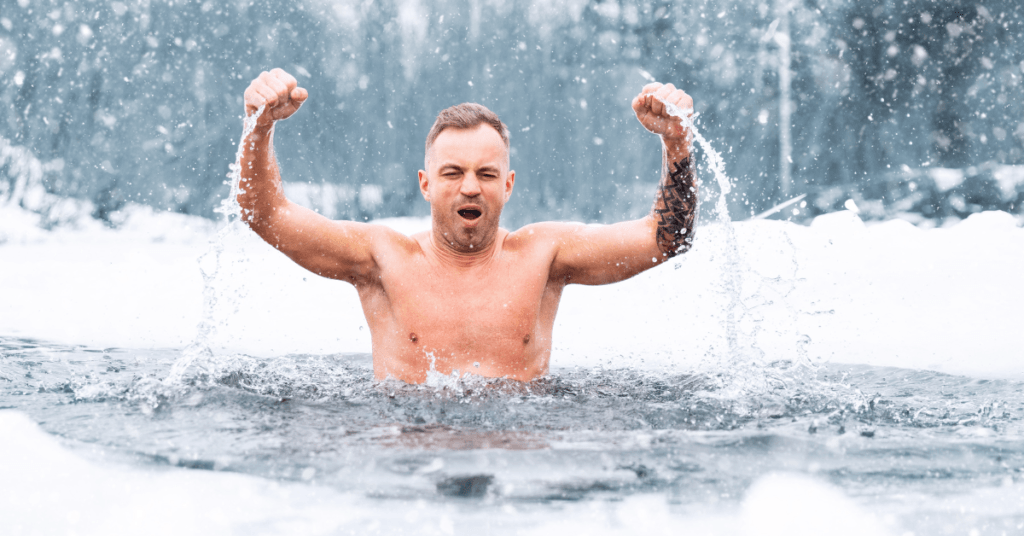Ever wondered, “Why do runners take ice baths?” Believe it or not, there are benefits, including reduced soreness after a run. Let’s see if we can entice you to take the plunge!
I’ve never been a fan of the cold, so it took me a lot of research and willpower before taking my first ice bath after a run. Now I can’t imagine foregoing an ice bath after an intense workout. Runners take ice baths to help them reduce soreness and have a faster turnaround time to work out again. Let’s explore this topic a little more.
Ever wondered what a stitch is? Check out our article what causes side aches when running.
Contents
Why Do Runners Take Ice Baths? 3 Benefits
When exploring the question “Why do runners take ice baths?” it’s important to start with its benefits. While scientists are still on the fence about how effective ice baths are for athletes, they may help in the following ways:
- Reduced muscle soreness
- Decreased chance of inflammation
- Improved performance after long, intense workouts
Ice baths can also reduce the amount of pain a runner may feel after a workout. That’s because cold temperatures decrease the number of nerve impulses, offering a numbing effect.
If you’re like me, non-running family and friends roll their eyes when they hear I often feel some pain after a long run. But I know my fellow runners understand that it’s worth it for the love of the sport.
Why Do Runners Take Ice baths? Understanding the Science

I won’t beat around the bush—the research is inconclusive on how effective ice baths are for runners and other athletes. That’s because ice baths are an emerging trend, so scientists are just beginning to study their impact.
Nevertheless, some researchers believe that ice baths are effective not because of the cold but because of the pressure that accompanies immersing your body in water of any temperature.
You’ve likely felt pressure in your ears the deeper you swim underwater. The same happens for your body—and, most notably for runners, for their legs. So, the gentle and constant squeeze of your legs from water pressure may help reduce soreness in the days following an intense run.
The water pressure squeezes your muscles, pushing fluid back into your bloodstream. From there, the pressure encourages blood to move from your legs back towards the center of your body.
By removing fluid waste from your muscles, the chances of inflammation decrease. As a result, your legs and body will feel better able to manage another endurance run in a faster amount of time than if you skipped an ice bath—or a bath of any temperature.
Where Temperature Comes Into Play
Although science suggests that runners can benefit from baths regardless of the water temperature, preliminary research shows that the cold temperatures from ice baths can play a supportive role.
That’s because immersing yourself in cold water prevents unwanted fluids from infiltrating your muscle cells.
As a result, the chances of inflammation decrease significantly. Even though your average run (hopefully!) doesn’t involve major swelling-inducing injuries, the repetitive impact on your legs can lead to small-scale swelling in your leg muscles.
So, until researchers do more ice bath experiments, it stands to reason that ice baths contribute to decreased swelling for runners in addition to the natural pressure from water of any temperature.
When To Take Ice Baths

Now you know the answer to the question, “Why do runners take ice baths?” So, let’s explore how to do it.
Technically, there’s never a bad time to take an ice bath. A study on the impact of cold showers even showed that people had a 29% less chance of calling in sick for work or school.
However, for many runners, there are better times to take an ice bath than others.
I take my ice baths only after a long or intense run. That’s because my legs don’t get sore enough on my shorter run days to make it worth it to fill a tub with ice.
There doesn’t appear to be any harm if you want to take an ice bath after every run, though. And in case it needs mentioning, it’s best not to take an ice bath before a workout of any kind—you want to warm up your muscles, not cool them down.
The Downsides to Ice Baths
Some new research points to a potential downside of ice baths: They prevent new protein in your muscles from generating.
Although it would be a disservice to runners to have a bodybuilder physique, it’s still vital to maintain lean muscle.
So, if you’re concerned about the potential impact of losing protein, incorporating active recovery after a long workout can be an excellent option.
Hot vs. Ice Baths
Heat therapy is another method that some runners use as part of their recovery routine after a workout. As with ice baths, scientists need to conduct more studies before coming to conclusions.
However, although heat can help muscles relax and fluids flow better away from your muscles, it’s generally believed that ice baths are likely more effective for the average runner.
Remember there are plenty of exercises that deliver a high impact cardio workout. Check out our alternatives to running guide.



